The Profitable Property:
An Unlikely Repurposing
In a bold move, Bank of Montreal (BMO) is relocating 3,000 employees working in business and personal banking throughout Toronto to a single location atop four floors at Eaton Centre, one of Ontario’s largest shopping malls in the city’s downtown area.
The new 346,401-square-foot workplace, a former Sears store with massive floorplates (75,011 to 94,743 square feet) and escalators typical of a department store, will support BMO’s evolution to a digitally enabled future-ready bank. Through the adaptive reuse of a space never intended for the financial industry, BMO is bringing its professionals together for greater connectivity and inclusion.
The move underlines the bank’s creative and visionary tradition that has played a dynamic, innovative role in the city’s long history. The first two floors, four and five, are now complete and staff has settled in. Floors six and seven will be ready for occupancy in 2024.
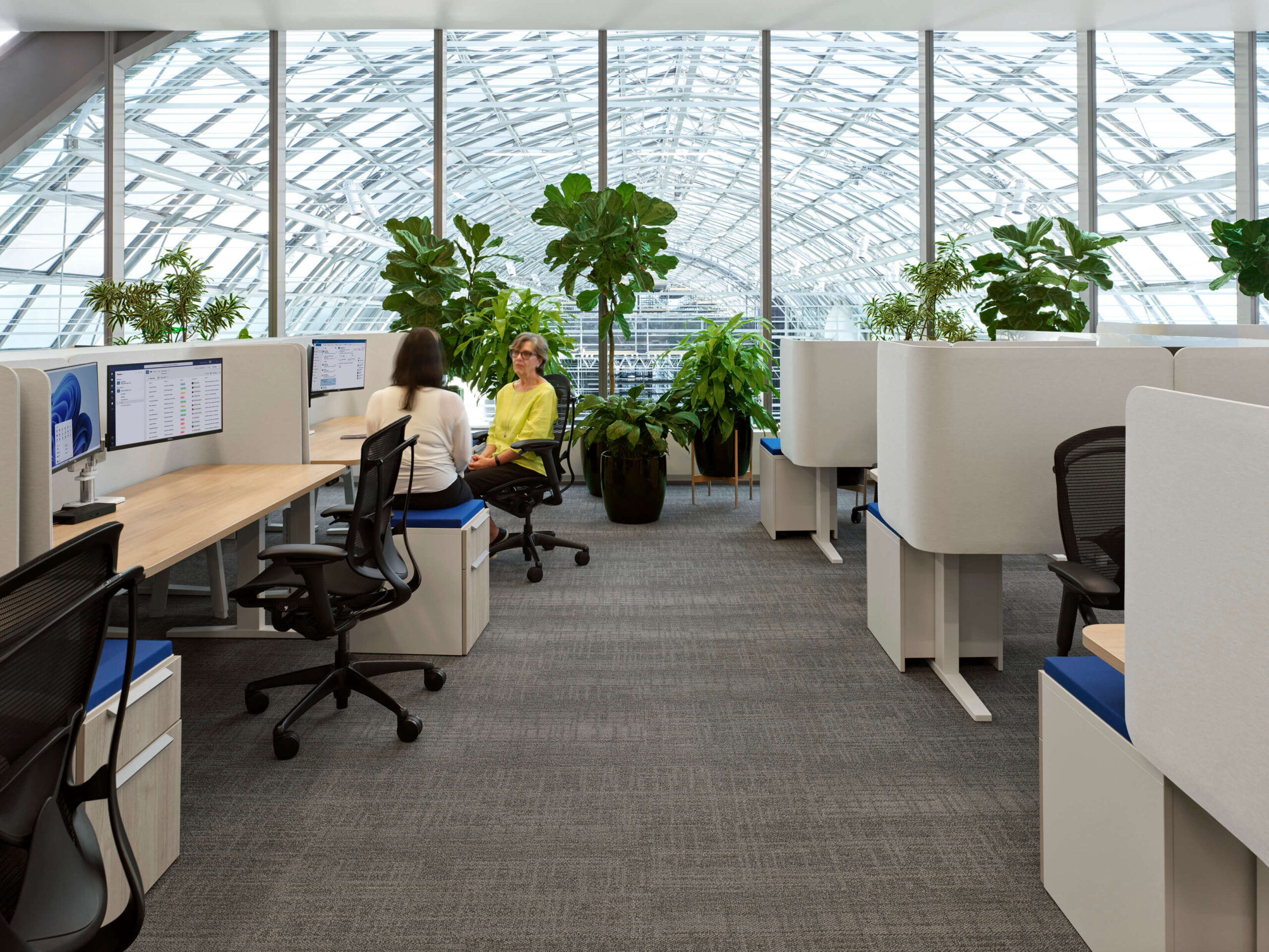
Designed for Visibility
The campus design emphasizes visual connection. In contrast to an office tower where you move from floor to floor but cannot see the groups located there, the positioning of departments as neighborhoods within the large floorplates establishes compelling sight lines. Employees can see one another horizontally and vertically while traveling the site’s escalators, creating a sense of relationship and encouraging interaction.
As major design features the escalators seem to float between a pair of 100-foot-high atriums cut through the floors under roof-top skylights. The escalator structures are enhanced with a kaleidoscope of vibrant but soft hues based on the emotional impact of color in relationship to space—an aesthetic statement emphasizing the importance of these critical arteries for movement throughout the workplace. Two different consultants/artists were engaged to work in various areas of the campus, as well as within internal stairwells where graphics enhance the user experience.
Through 12-foot-tall glass windows added to the site’s previously windowless exterior walls, employees have a visual connection to the thriving activity and commerce of Dundas Square and a sense of their immersion in the flourishing activity of the consumers they serve.
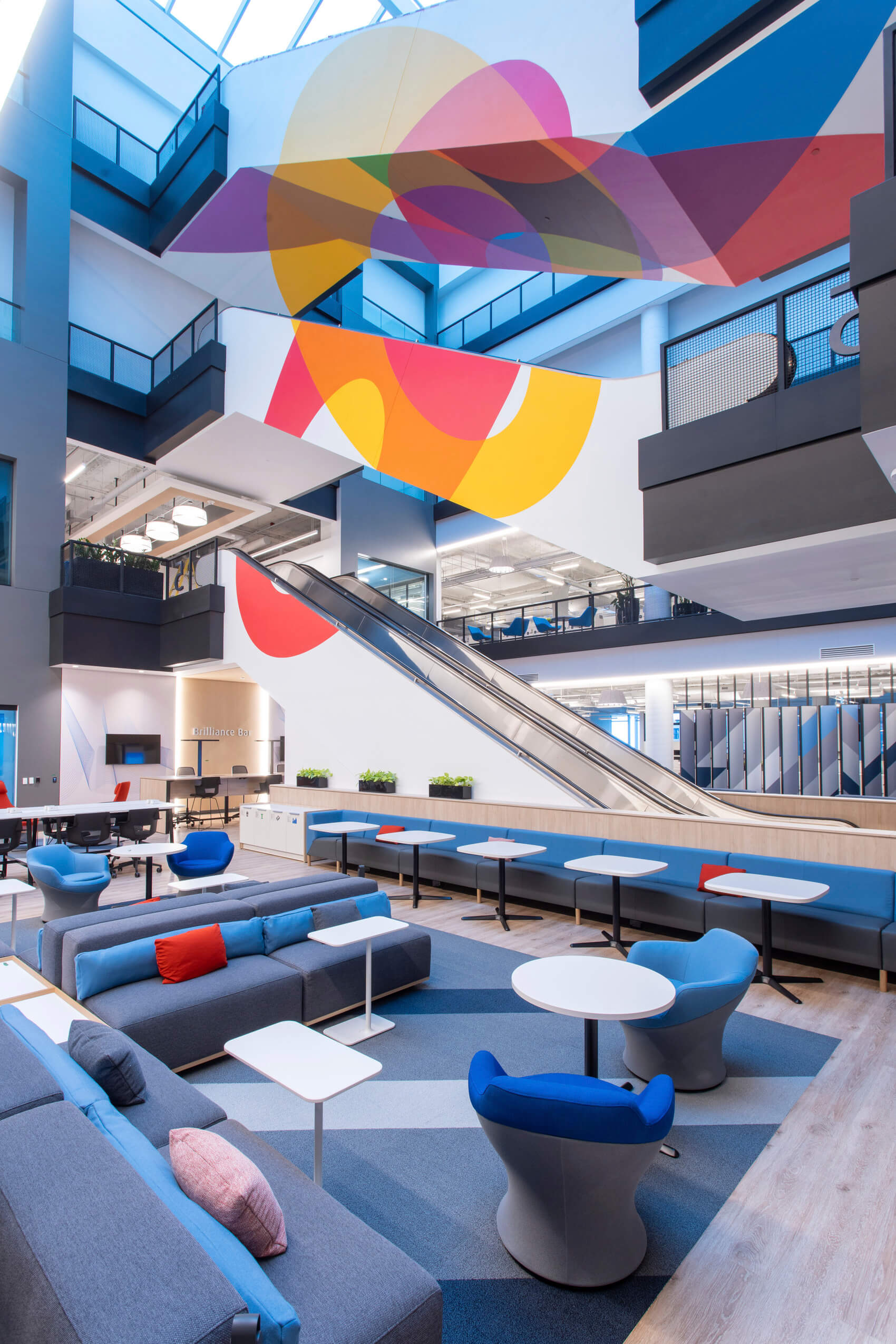
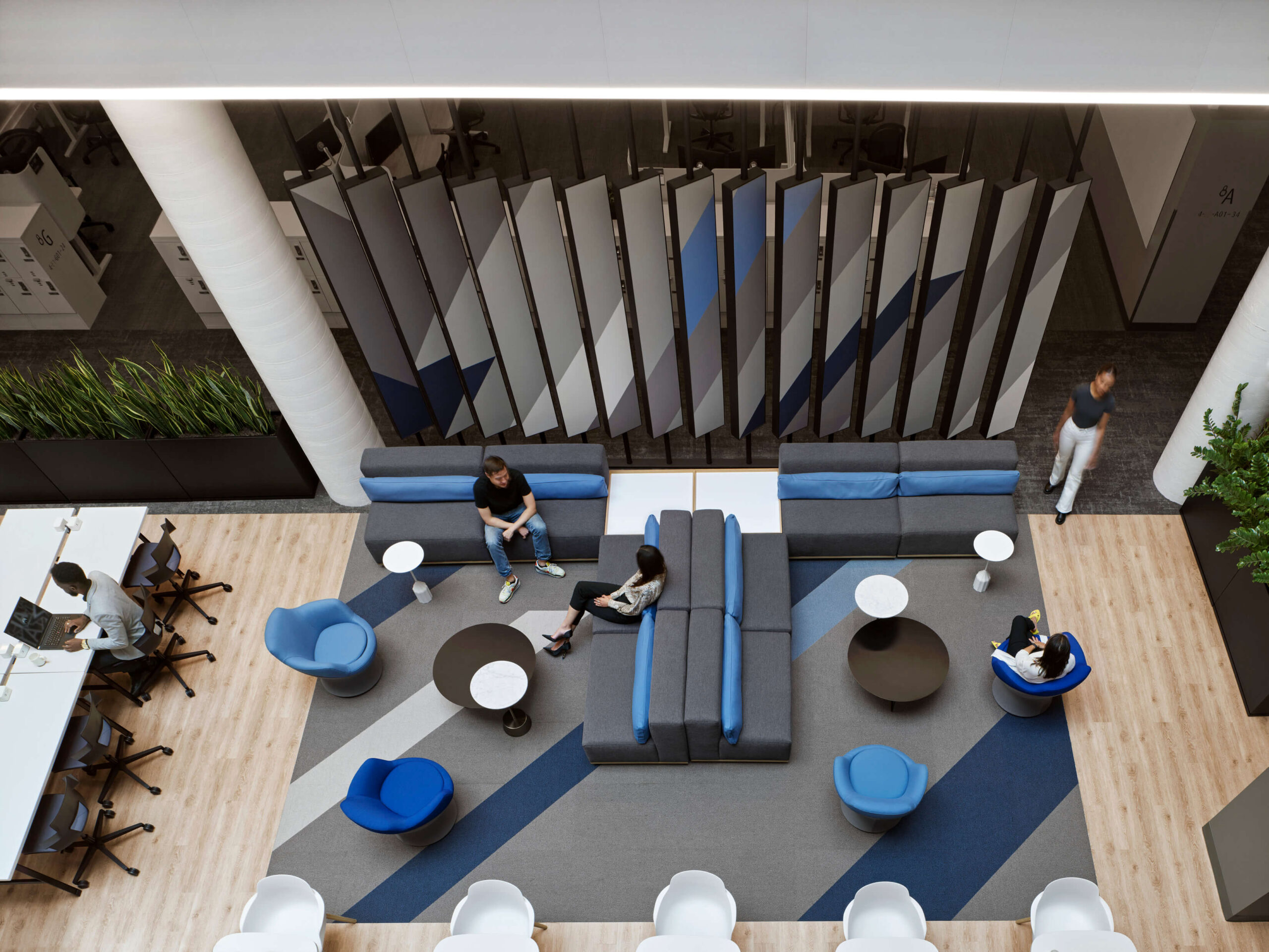
Inclusivity and Amenities
BMO’s commitment to an inclusive work environment is understood through a variety of features. There are prayer and meditation rooms, mother’s rooms, a foot-washing station, and a space for smudging with augmented ventilation for ceremonies. In addition, at the fourth-floor entrance welcoming signage written in English, Bangla, Anishinaabemowin, Arabic, French, Chinese, Hindi, and Spanish speaks to employees on a more personal level.
With such large floorplates, ease of navigation is key. Wide corridors as well as generous circulation within conference rooms ensure accessibility for wheelchairs and scooters. Elevators use voice activation. Signage includes Braille and color-coded cardinal zone directions for wayfinding. Additionally, each floor features a signature shade of blue derived from BMO brand colors, the lightest blue on the lowest floor that receives the least light from the atriums to the darkest blue on the top floor. Storytelling graphics based on BMO brand themes—innovation, community, connection, and sustainability—further distinguish and enhance each floor.
Multiple amenities include a recreation room with stadium seating and foosball and ping pong tables that are easily stowed during events. A wellness center accommodates yoga/ fitness classes and health seminars. Two Connection Cafes with coffee bars on each floor are located at the foot of the escalator and elevator lobby for convenience and to encourage casual interaction. A larger community hub adjacent to a roof deck will be on the top floor with a barista bar and micro-mart.
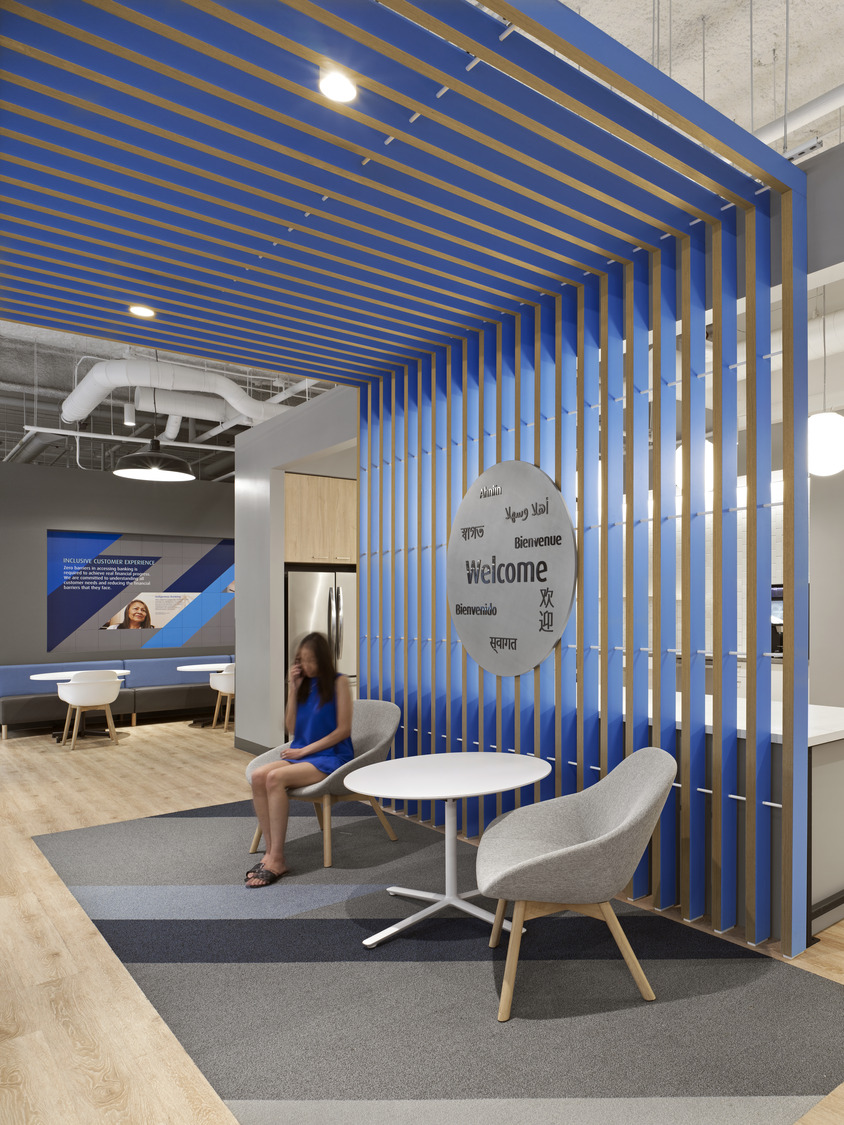
Sustainable Practices
With sustainability as a primary objective, BMO chose renovation and repurposing rather than a new build. An array of innovative features include energy-efficient mechanical, electrical, and lighting systems, as well as water-conserving fixtures and a centralized waste-management strategy that helps reduce CO2 emissions from landfills. For lighting, there is a harvesting system. Moreover, two subway stations within the mall make the use of public transit an attractive option.
The decision to omit the unnecessary material of dropped ceilings at the Connection Cafés was based on sustainability. The higher ceilings throughout the workplace improve airflow and acoustics, ensuring less noise but enough noise to keep the environment stimulating. Insulation sprayed on ceilings and patterned-felt walls provide additional sound absorption as does fireproofing materials. The campus is targeting LEED Gold certification.
Workspaces
Open spaces and dedicated quiet zones as well as informal meeting spaces with flexible furniture and whiteboard walls are on every floor. The bank uses a hybrid-work model and seating is unassigned although there is a reservation system. Both bookable and touchdown workstations are available. A variety of collaboration nooks, conference rooms, focus rooms, and telephone rooms offer choice, complementing activity-based work. Workstations are positioned in daylit areas with L-shaped desks that can easily transform into harvest-style tables.
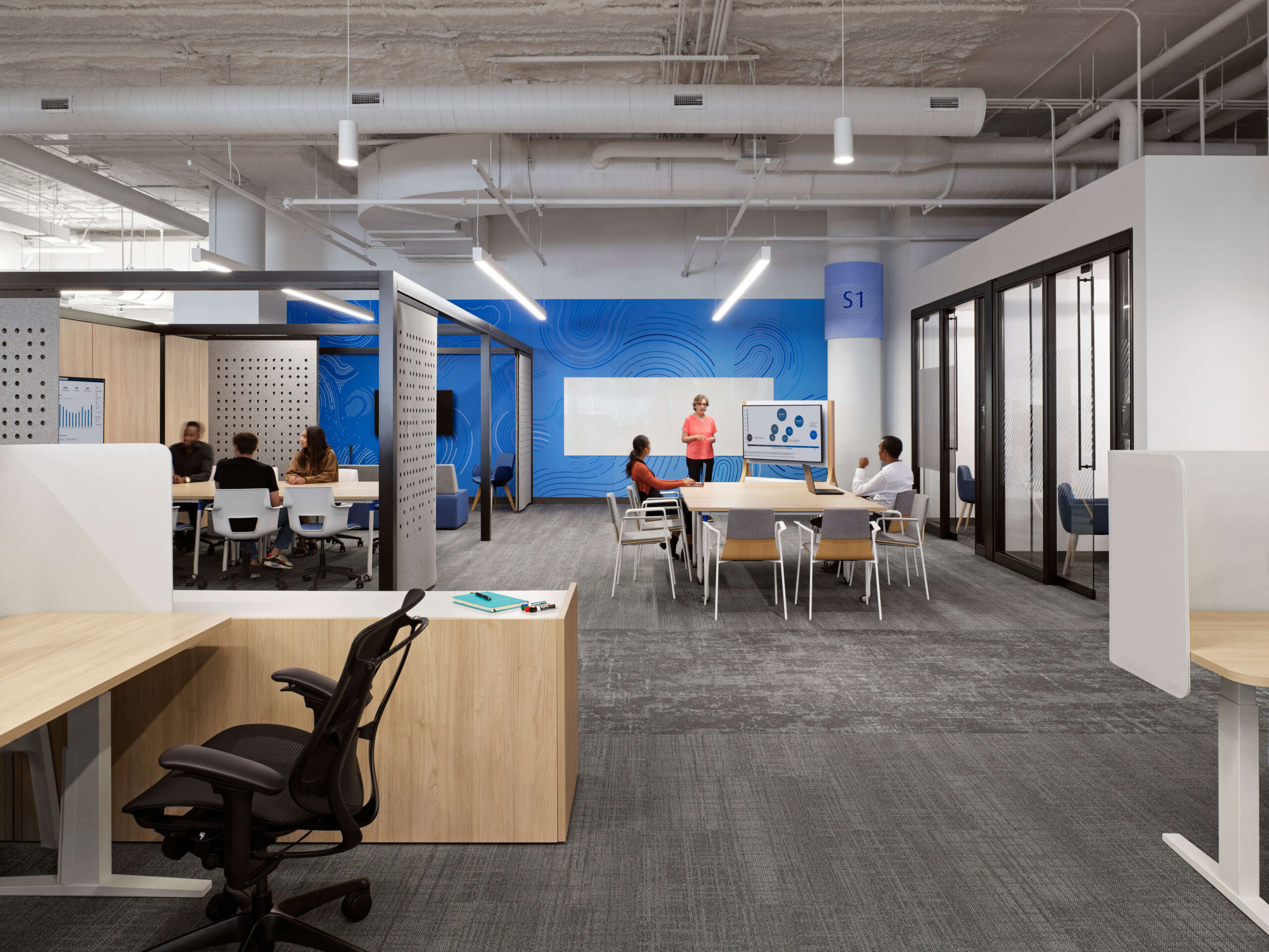
Final Thoughts
The repositioning of this iconic property, originally a single-use facility now adapted for mixed-use, as BMO’s innovative workspace for inclusivity, sustainability, employee comfort, and productivity portends the potential of a variety of space types as intriguing candidates for creative repositioning.
